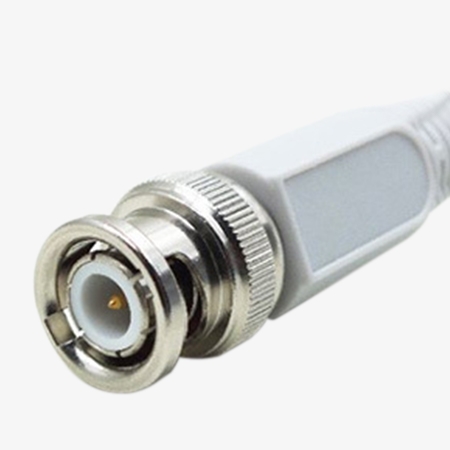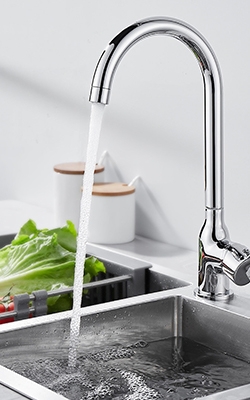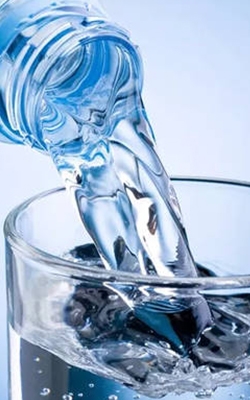The fluoride ion selective electrode features a BNC (Q9 type) quick-connect connector for easy setup and operation, with a composite electrode design that ensures stability for long-term measurements. It supports a wide range of fluoride ion concentrations and operates optimally within a pH range of 4 to 8 and a temperature range of 5 to 45°C. Durable and resistant to chemical corrosion, it is ideal for complex water samples, providing reliable performance across domestic, industrial, and recreational water sources.

Connection and Operation Features of FISE
- The electrode is equipped with a BNC (Q9 type) quick-connect connector, simplifying the connection between the electrode and the instrument.
- This fluoride ion electrode supports a wide range of fluoride ion concentration measurements.

Performance and Durability Features
- The fluoride-selective electrode offers good stability, making it suitable for long-term continuous measurements.
- The composite electrode design is typically highly durable and resistant to corrosion from various chemicals, making it suitable for complex water samples.
Application
The ion selective electrode is a versatile tool widely used for monitoring and analyzing water quality across various applications. It is particularly effective in testing drinking water, domestic water, pool water, and industrial water, ensuring compliance with safety and regulatory standards. Its high sensitivity to specific ions makes it ideal for detecting trace contaminants in these water sources. Additionally, the electrode can be used for analyzing surface water and groundwater, providing critical data for environmental monitoring and pollution control. Whether for routine quality checks or environmental research, the ion selective electrode offers reliable, precise measurements to help maintain safe and clean water across different settings.

Domestic Water

Pool Water

Industrial Water

Drinking Water
| Model | SISCO-ISE-PF-202-L | SISCO-ISE-PF-202 | SISCO-ISE-PF-202-C |
| Ion | Fluoride ion | Fluoride ion | Fluoride ion |
| Type | Composite electrode | Composite electrode | Composite electrode |
| Measurement Range | 10⁻¹~10⁻⁶ mol/L | 10⁻¹~10⁻⁵ mol/L | 10⁻¹~10⁻⁶ mol/L |
| pH Range | 4~8 | 4~8 | 4~8 |
| Operating Temperature | 5~45℃ | 5~45℃ | 5~45℃ |
| Liquid Junction | Fiber single salt bridge | POM | Fiber single salt bridge |
| Reference Structure | Ag/AgCl | Ag/AgCl | Ag/AgCl |
| Filling Solution | 3.0KCl mol/L | / | 3.0KCl mol/L |
| Standard Solution | NaF | NaF | NaF |
| Ion Strength Adjuster (Powder) | Small amount of sodium chloride | Small amount of sodium chloride | Small amount of sodium chloride |
| Housing Material | Polyester carbonate | Polyester carbonate | Acrylic |
| Sensitive Membrane Material | Single crystal | Single crystal | Single crystal |
| Dimensions | Φ12×120 mm | Φ12×120 mm | Φ12×120 mm |
| Connector | BNC (Q9 Type) | BNC (Q9 Type) | BNC (Q9 Type) |
Q1: What is an ion selective electrode (ISE)?
A1: An ion-selective electrode (ISE) is a type of sensor designed to measure the concentration of specific ions in a solution. It is used in various fields, such as environmental monitoring, clinical diagnostics, and industrial applications, for real-time ion concentration measurements. ISEs are highly valued for their simplicity, accuracy, and ability to provide precise data without the need for complex sample preparation. These electrodes offer a quick and reliable way to monitor ion levels in a variety of solutions.
Q2: How does an ISE work?
A2: An ion-selective electrode (ISE) works by utilizing a membrane that selectively interacts with a specific ion in a solution. The electrode generates an electrical potential when the ion of interest interacts with the membrane. This potential is directly related to the concentration of the ion in the solution. The ISE typically consists of a reference electrode and an ion-selective membrane, which allows the target ion to pass through or interact with it, while minimizing the influence of other ions. The measured potential is then used, along with the Nernst equation, to calculate the ion concentration in the solution. This enables accurate and real-time measurement of ion levels.
Q3: What types of ions can an ISE measure?
A3: An ion-selective electrode (ISE) can measure a wide range of ions, depending on the type of membrane it uses. Commonly measured ions include sodium (Na⁺), potassium (K⁺), calcium (Ca²⁺), chloride (Cl⁻), ammonium (NH₄⁺), nitrate (NO₃⁻), and hydrogen ions (H⁺), among others. Each ISE is designed to selectively respond to a particular ion or group of ions, allowing precise measurements in different applications. For example, a sodium ISE can be used in clinical diagnostics to monitor blood sodium levels, while a chloride ISE may be used in environmental monitoring to assess water quality. The ability to measure specific ions makes ISEs highly versatile tools in fields like chemistry, biology, medicine, and environmental science.
Tips: How do you calibrate an ISE?
Calibrating an ion-selective electrode (ISE) involves using standard solutions with known concentrations of the ion being measured to establish a relationship between the electrode's measured potential and the ion concentration. The process typically begins by preparing or acquiring several calibration solutions that cover the expected range of ion concentrations. These solutions should be fresh and accurately prepared. The ISE is immersed in each calibration solution, and the corresponding potential is recorded. The electrode’s response is then plotted, typically using the Nernst equation, to create a calibration curve. This curve allows the electrode to convert future potential measurements into ion concentrations. Calibration should be performed regularly to ensure accuracy, especially when switching between different ion types or when the electrode’s performance may change over time.
Thank you for buying industrial test and measurement equipment on SISCO.com, all products sold by SISCO and the partner cover a 12 months warranty, effective from the date of receiving the products.
What is covered?
SISCO is responsible for providing free spare parts, and free technical support to assist the customer to repair the defective products until the problem is solved.
What is not covered?
- Product purchased from anyone other than a SISCO store or a SISCO authorized reseller.
- Expendable parts.
- Routine cleaning or normal cosmetic and mechanical wear.
- Damage from misuse, abuse or neglect.
- Damage from use of parts other than SISCO approved.
- Damage from use outside the product’s usage or storage parameters.
- Damage from use of parts not sold by SISCO.
- Damage from modification or incorporation into other products.
- Damage from repair or replacement of warranted parts by a service provider other than a SISCO authorized service provider.
- Damage caused by the application environment not meeting the product usage requirements and the failure to perform preventive maintenance.

